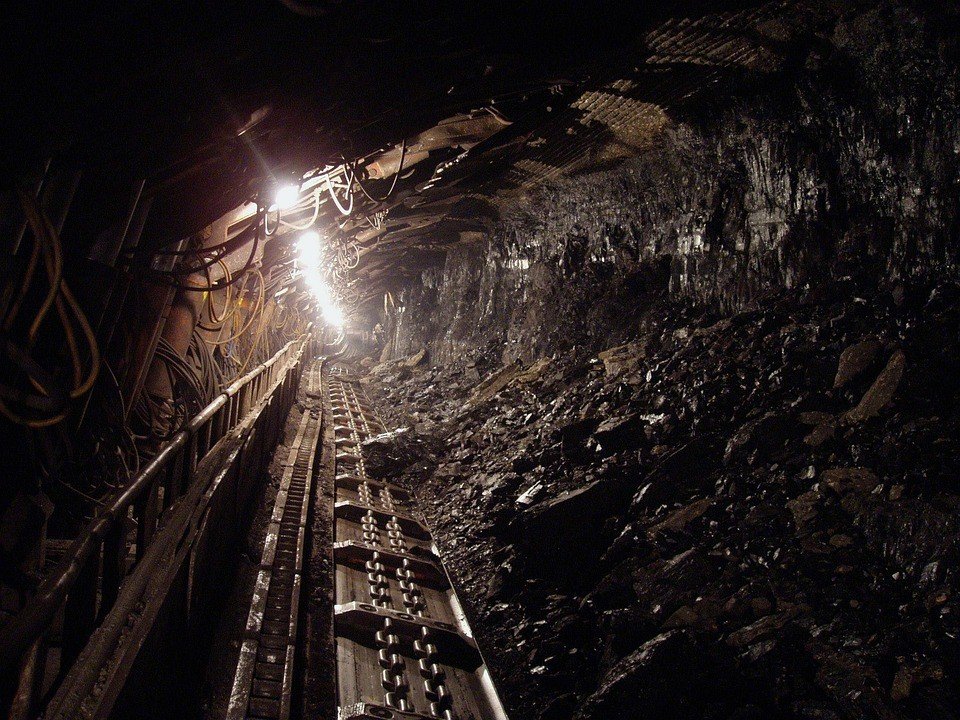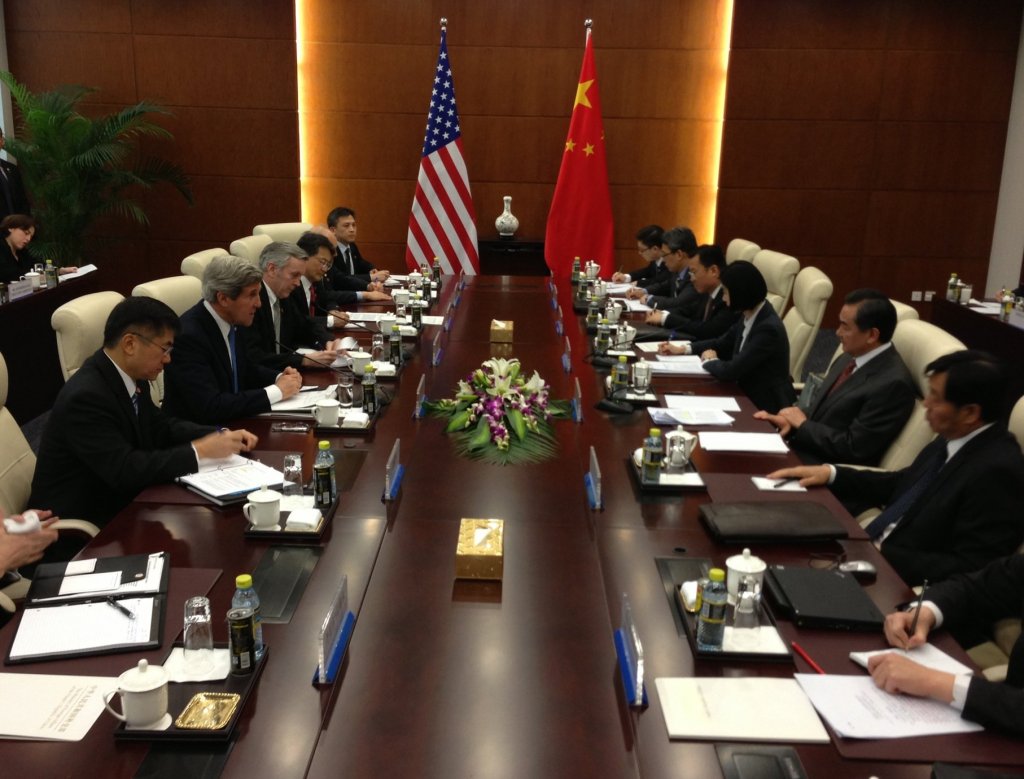Markets
Investing in mining is not for the faint-hearted
Investing in mining is not easy these days given the political unrest and economic uncertainties in other countries. With that, investors are starting to reevaluate their priorities.

The past year has been rough for the global economy. Those keen on investing in mining have a difficult road ahead. Only the tough can play the long game.
The oil market has sustained a significant blow, with supplies in excess as demand slowed down. With OPEC refusing to decrease its production in spite of an implosion of prices, barrel costs have since plummeted to as low as $60. This has affected a lot of companies, not just producers and refineries but everyone else whose downstream operations make use of oil and gas.
The Russian-Ukraine conflict, a much talked about political crisis, also bore an impact, with NATO members blaming the Kremlin for the increased violence and death toll in the region, as well as the limited access to various economic goods. Many believe that Russian’s anti-West sentiments are a key driving force to the weakening relationships with neighboring countries. Too, the subsequent annexing of Crimea has lead to sanctions being imposed by the European Union and the US, and the devaluation of the ruble.

A police officer attacked by protesters during clashes in Ukraine, Kyiv. (Photo by Mstyslav Chernov via Wikimedia Commons. CC BY-SA 3.0)
Meanwhile, the Indonesian export ban on ore that still stands today has definitely reduced the supply provisions that were much needed by a lot of countries, most of all China. The move was expected to increase Indonesia’s domestic profits, but Asia Times reports that the nation’s currency has reached “decade lows,” with foreign partners slowly losing interest in face of political and financial junctures.
All over the world, businesses struggle to stay on their feet, and those who are unable to withstand the pressure have no choice but to pack up or file for bankruptcy. Given the landscape, it is not surprising that a lot of investors have started reevaluating their priorities in the last few quarters.
Moreover, because of quantitative easing (QE) there is now substantial liquidity in the market. Barron’s Asia posits that the world is “swimming in cheap money.”
David Brown, writing in the South China Morning Post, says that it is all “down to exit strategy now and how policymakers determine life after QE. Sadly there is no globally coordinated contingency plan. It has all the hallmarks of the central banks flying by the seats of their pants for years to come and with the outcome looking highly uncertain for global markets and for the world economy.”
Peter Hall, chief economist of Export Development Canada, also has this to say via Huffington Post: “Financial markets are likely in for a bumpy ride in the coming years — what we now see is perhaps a foretaste. Hiding from the ups and downs isn’t likely an option.”
What this all means for the mining sector
As our economy continues to go through cyclical lows, analysts believe that commodities, especially precious and base metals, are still strong enough to withstand setbacks. while infrastructure has slowed down in countries such as the US and China, the consumer market continues to be in need of base metals for products such as technological gadgets and home appliances. Furthermore, because of the low cost of oil, operational expenses are squarely reduced. Mining companies are now urged to take a look at their portfolios and do some restructuring—stimulus from governments working to rise above difficulties will also only further help the performance of the mining sector.
Some inventories like nickel are still likely headed towards depletion though, and the following consequences are likely: commodity prices will rise in order to accommodate demand, and new producers will take the place of spent mines, triggering new rounds of exploration. An example of the latter is Amur Minerals Corporation (LON:AMC), whose detailed exploration and mine production license was finally granted and issued by Rosnedra after a long and arduous process.
Its flagship project, Kun-Manie, is located in the Far East of Russia, and is said to be in the top twenty nickel-sulphide projects in the world. The good news comes at a time when the world market is in true need of nickel, and Amur is looking forward to fill the shoes left by other producers. The company’s license is valid until July of 2035, with terms specifying “100% of the rights” to the 36 square kilometer land, plus entitlement to “recover all economically valuable minerals including nickel, copper, cobalt, platinum, palladium, and other minor minerals.”
In an interview, CEO Robin Young has this to say: “The Licence is now officially assigned and we are pleased with the terms and conditions as negotiated by our staff and the Russian authorities. We have considerable flexibility to advance the project as swiftly as possible. Our push to accelerate toward a production decision is in the interests of our shareholders as well as the Russian Government. Kun-Manie has now become a key driver for economic growth in the Far East of Russia.”
Why mining investment is crucial
Per CNN Money, the two biggest economies, US and China, have significantly weakened, causing a ripple effect down the line. GDPs are down, and this year’s projections are extended to 2016. Who has time for mining investment, and why should we care?

U.S. Secretary of State John Kerry speaks with Chinese Foreign Minister Wang Yi at the beginning of a bilateral meeting in Beijing, China, on April 13, 2013. (Source)
True enough, these are dismal and disconsolate times for miners, but mineral exploration should continue against all odds. For one, it is dangerous to abandon our natural resources now—the world is constantly moving towards the future; spending may have diminished for a time, but consumption persists.
Production of coal, iron ore, and other minerals may be experiencing a slump, but once the economy picks up again, it is very likely that there will be unprecedented need for them in the future. Pierre Graton, president of the Mining Association of Canada, recalls the early 2000s when business trends pointed towards technology, specifically computer and internet startups. A lot of investors all over the world turned away from mining, resulting to mining companies becoming severely unprepared once the tech bubble burst. Suddenly a lot of infrastructure was needed, industries were expanding, and the demand for metals was at an all-time high.
Graton notes: “In the dot.com era, mining was abandoned, dismissed as a sunset industry whose time was over. Because we weren’t paying attention at the time, policy makers spent a good part of the last decade playing catch-up to capitalize on the resource boom that had arrived…We want to be in a position to maximize our return when the cycle changes again – which it will…[because] mining always bounces back.”
Governments must hold fast and continue to invest in mines for as long as they can. Those in Asia, like India and the Philippines, are considered to be a bright spot for global mineral and metals demand. Coal India (CIL), in particular, is now one of the world’s largest mining companies in the world, and power minister Piyush Goyal wants to keep that status by “finally opening up India’s coal sector to global competition,” according to The Times of India.
Playing the long game
Volatility has always been an aspect in investing that makes a lot of people nervous. However, in the world of commodities and mining, it is part and parcel of an industry that gives so much to those who have the guts to play the long game. Natural resources are assets that countries cannot live without, and every nation has its own strength with regards to what they can produce. Barring any unforeseen circumstances, we still need need one another for trade and business, and that relationship will continue even if a lot of us are currently undergoing difficulties.
Things might not look so good right now for countries such as Australia, which continues to unload or shelf mining projects in order to cut on costs and survive the falling dollar. However, there are some intent on moving forward, and only ever forward, such as the Philippines, which is touted to be rich in resources. Per the Joint Foreign Chambers: “With an estimated US$1.4 trillion in mineral reserves, especially gold, copper, nickel, aluminum, and chromite, the mining potential of Philippines is one of largest in the world. According to the Mines and Geosciences Bureau (MGB), the archipelago is second in the world in gold and third in copper resources. The country is ranked top five in the world for overall mineral reserves, covering an estimated nine million hectares, although less than 2% has received mining permits.”
More than the distribution of resources, mining remains relevant and important today because it is a source of employment for thousands of people, and is a major factor in export earnings. The manufacturing and tech sectors continue to rely and be dependent on minerals. From the cars we drive to the phones we use to the appliances that are part of our daily lives, consumers, too, have a lot at stake when it comes to mines staying open and operational. Almost all, if not everything we depend on makes use of minerals, whether in terms of production or distribution.
Investing in mining is not for the faint-hearted, whether you’re looking to put your money down on a major or junior mining stock, but those who can stick it out will be greatly rewarded. As the saying goes: “If it isn’t grown, it has to be mined.”
—
This article may include forward-looking statements. These forward-looking statements generally are identified by the words “believe,” “project,” “estimate,” “become,” “plan,” “will,” and similar expressions. These forward-looking statements involve known and unknown risks as well as uncertainties, including those discussed in the following cautionary statements and elsewhere in this article and on this site. Although the Company may believe that its expectations are based on reasonable assumptions, the actual results that the Company may achieve may differ materially from any forward-looking statements, which reflect the opinions of the management of the Company only as of the date hereof. Additionally, please make sure to read these important disclosures.

-

 Crowdfunding6 days ago
Crowdfunding6 days agoSavwa Wins Global Design Awards and Launches Water-Saving Carafe on Kickstarter
-

 Biotech2 weeks ago
Biotech2 weeks agoAsebio 2024: Driving Biotechnology as a Pillar of Spain and Europe’s Strategic Future
-

 Business1 day ago
Business1 day agoDow Jones Nears New High as Historic Signals Flash Caution
-

 Business2 weeks ago
Business2 weeks agoFed Holds Interest Rates Steady Amid Solid Economic Indicators

























